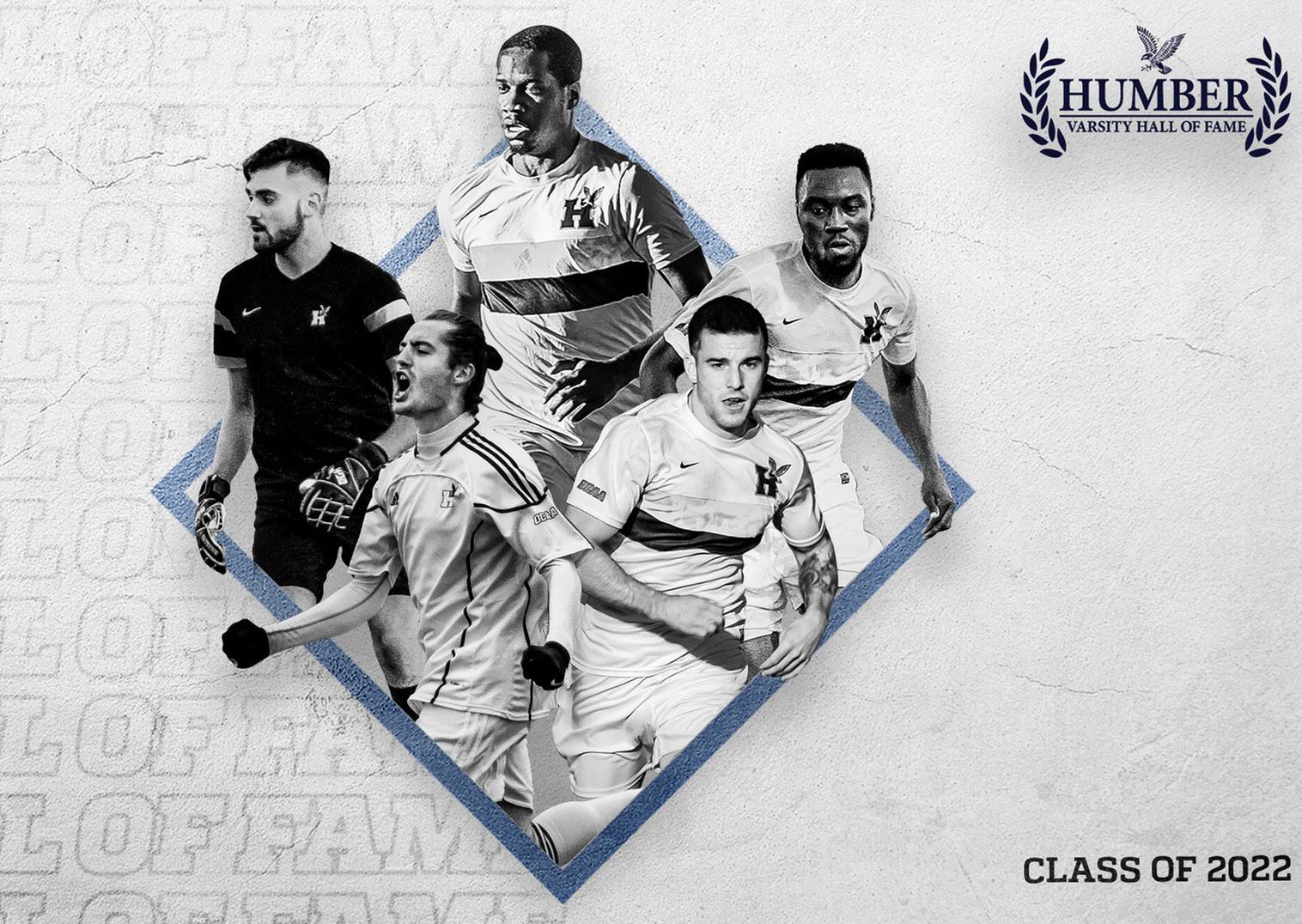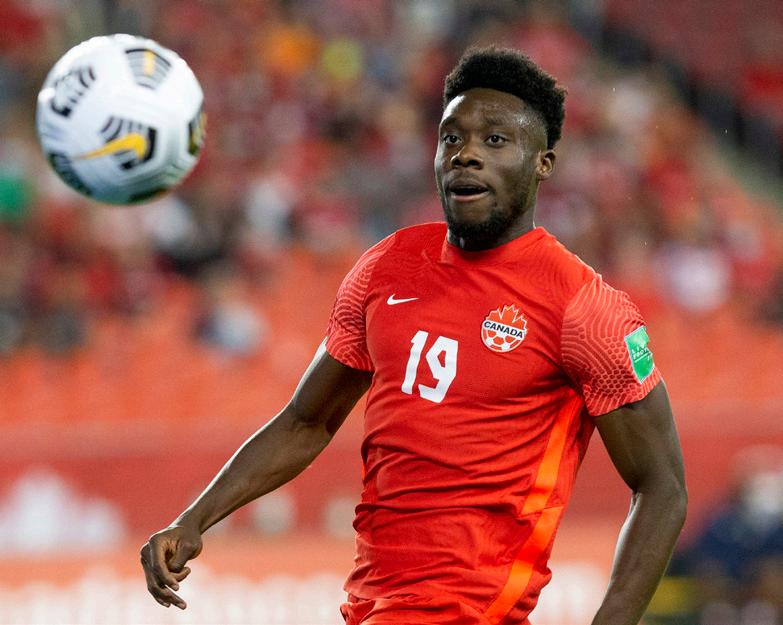HUMBER ET CETERA







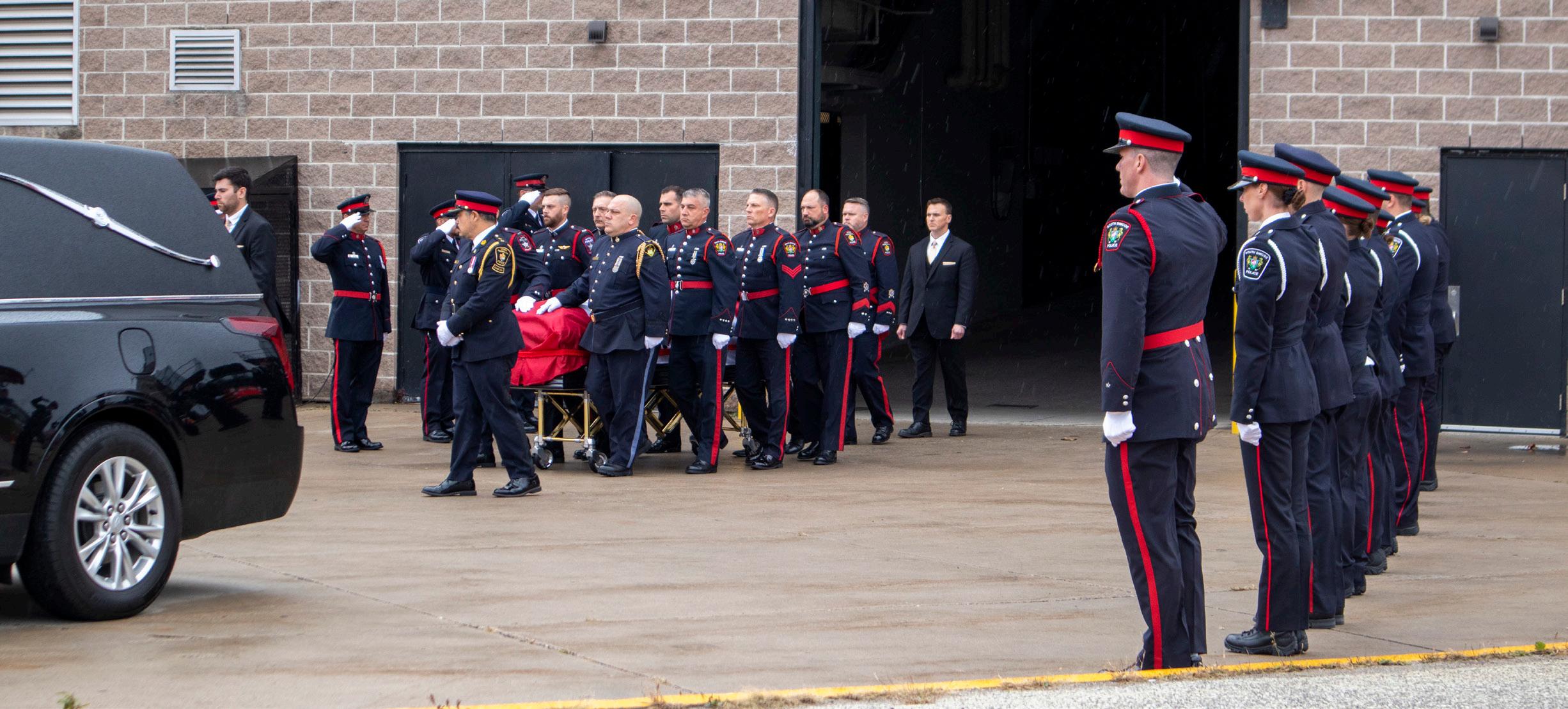 Emma Posca
Emma Posca
Andre
La Rosa-Rodriguez News ReportersBARRIE — Thousands of police officers and first responders stood along Bayview Drive in the cold, drizzly air to attend the funeral of their fallen officers who died in the line of duty.
But before the final eulogies were given, officers marched behind a police pipe band through the snowy streets as they made their way to Sadlon Arena. Their moment of solidarity was also a moment of sorrow.
It was their final tribute to South Simcoe Region Constables Morgan Russell, 54, a 33-year veteran, and Devon Northrup, 33, with six years of service, who were killed during a domestic disturbance call on Somers Boulevard in Innisfil by a lone gunman armed with an SKS
semi-automatic rifle on Oct. 11.
Northrup’s spouse Annie Romard recalled the last moment she shared with him to family, friends and officers from across the country at the packed arena.
Annie said it was a typical morning where they drank coffee together and told each other to “stay safe” before leaving for work.
“We would spend the rest of the day texting about how we couldn’t wait to see each other that night,” she said. “Little did either of us know our lives would be changed forever.
“I will love you forever and you will always be my hero,” Annie said.
Northrup’s brother, Brock, remembered the times they would spend at the cottage and how much they would play video games together.
“I’m glad we enjoyed co-op mode and video games rather
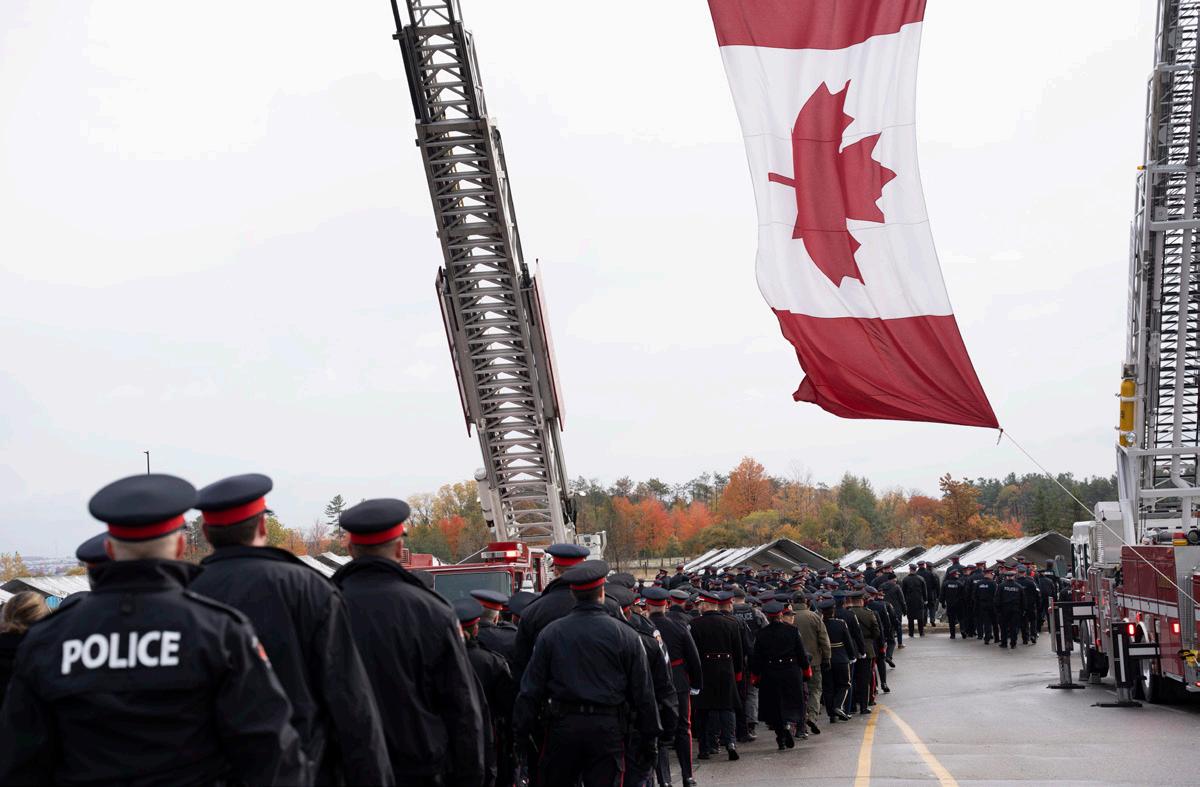
than competing against each other, because I cannot compete with the impact you’ve had on our community, on our friends, and especially on our family,” he said.
“You never wanted to be in the spotlight. But I’m so damn proud to see you in the spotlight now,” Brock said.
Acting South Simcoe Chief John Van Dyke said both constables were brave and dedicated men who gave their lives protecting the community.
“They were respected, professional and compassionate,” he said.
Russell’s wife Marisa and their two daughters Madelaine and Maggie told mourners their last memory they shared together was of saying goodbye, and “I love you.”
Marisa said the night that followed was “routine” until the chief of police rang their doorbell. She said it was a visit no police wife ever wanted to get.
“Madelaine, Maggie and I lost our source of strength, our confidant and our advisor,” she said as her voice trembled. “I hope that one day we will learn to accept this crushing loss.”
Russell’s daughter, Madelaine, choked back tears as she told the arena that she wants people to learn from her pain.
“Our police officers are also beloved spouses, parents, family members, and friends who have families that will be devastated if they do not come home,” she said.
Ontario Premier Doug Ford and Lt.-Gov. Elizabeth Dowdeswell commended Northrup and Rus-
Humber Et Cetera is the Humber College journalism program laboratory newspaper. It is created by second and third year journalism students. Et Cetera serves to inform the Humber community and give its readers well rounded coverage on the things that matter to them.
Glazer
sell for putting their lives on the line. They said their names will be inscribed on the monument for fallen officers in Queen’s Park where citizens of Ontario will be able to pay their respects.
Residents came to the procession and shared their support for the fallen officers.
“I think it’s important that these guys all know that we back them,” retired emergency room nurse Dawn Kelly said. “I think it’s important to honour those who have sacrificed for us.”
She spent 36 years in the ER and grew close to officers and paramedics from around the community.
Families like Rosie Reid and her nine-year-old son, Jameson, knew people who were on the South Simcoe service. They said coming to the procession was important to them.
“The bare minimum I think we can do is to show up and support them and their families,” she said.
Following the funeral service, the constables’ caskets were loaded into the hearses and taken away as their families followed behind them.
Northrup and Russell were among five officers killed recently.
Toronto Constable Andrew Hong was murdered Sept. 12, York Constable Travis Gillespie died in a crash involving an impaired driver on Sept. 14, and RCMP Constable Shaelyn (Tzu-Hsin) Yang was stabbed to death in Burnaby, B.C., on Oct. 18.

John Tory and Gil Penalosa have now unveiled new plans for Toronto’s current transit system, with election day just four days away.
Both promise expanded public transit projects, although issues regarding cost and lack of immediate improvements have faced the most criticism.
Transit activist Steve Munro told Humber Et Cetera the focus should be on service management and reliability.
“I’m very worried,” Munro said. “There’s been too much of a focus on big-ticket construction projects and not enough on day-to-day funding and quality of service.”
Munro is concerned regarding eliminating bus overlap causing huge wait-time gaps, and providing more options for those living in suburban areas needing faster routes to get across the city rather than just to the downtown area.
Tory’s expansion plan is primarily funded by the provincial government and consists of four main projects: the Scarborough Subway extension connecting to multiple lines, the Ontario Line LRT, Eglinton Crosstown LRT, and the Yonge North extension on Line 1. Tory said all four projects will cost $28 billion to build.
The plan was announced by the provincial government in 2019 with construction starting immediately. Two weeks ago, the
Scarborough Subway extension, expected to be operational by this fall, was delayed again as workers ran behind schedule. Tory said that if elected, he would ensure that these projects are completed.
However, Munro mentioned that this plan doesn’t solve any ongoing concerns that require immediate attention.
“We’re going to build a bunch of stuff and it’ll open in 10 years but meanwhile, where’s my bus?” he said.
Ramin Kaur, an employee at Amazon in Etobicoke, faces many bus delays and long wait times as she heads to work.
“If I miss the bus by even one minute I have to wait for 30 minutes,” she said. “We sometimes have to wait for half an hour and sometimes over an hour.”
Kaur said that on weekends she normally has to Uber to work to arrive on time due to these delays and wait times.
Munro told Humber Et Cetera that the current transit service is currently oriented towards the conventional Monday-to-Friday rush hours.
“If you’re trying to get around outside that [rush hours], especially on the weekend, good luck,” he said.
Penalosa plans to address wait time concerns with his ‘FastLane’ BRT service. His $3.2 billion plan would involve the addition of nearly 62 kilometres of high speed bus lanes and 30 additional bus-
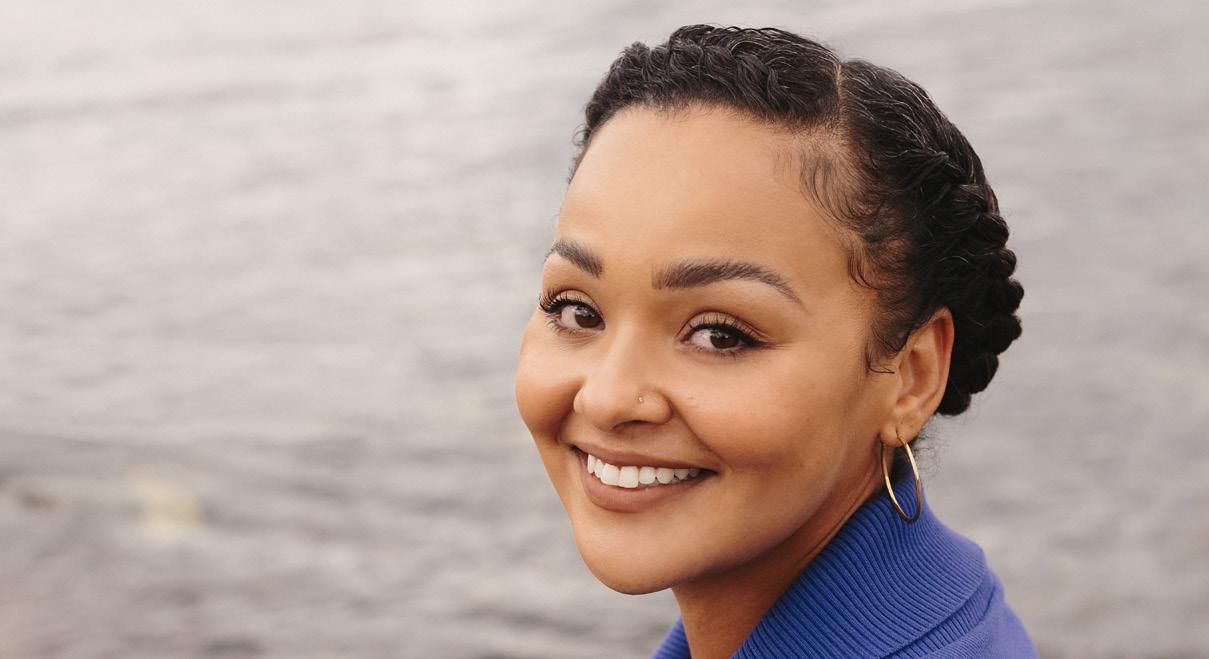
only lanes across Toronto and is expected to be completed within four to eight years.
These buses are planned to pass by as often as subways.
Munro said while the plan is more cost-effective than Tory’s, it is very limiting. The routes are within the city core and it doesn’t solve anything for residents outside of these routes.
“If you don’t happen to be on Gil’s map, well you’re going to have to wait for the same bus that will be coming just as often as it does today,” he said.
Bijeesh Mallika, a frequent TTC bus rider and York resident, expressed his frustrations when travelling across the city.
“I find it difficult to use transit,” Mallika said. “Buses come in every 30-40 minutes and there are normally delays.”
Mallika wishes to see Penalosa’s plan get built. He notes that buses are much more accessible to him as his daily routines take him near the northern border of the city where there are almost no subway routes.
Munro told Humber Et Cetera that the transit system needs an “overall improvement in the quality of service” before it takes on large expansions that have the same issues.
“We need some quantity too, but we need quantity in terms of improving the system we’ve got now rather than adding long dotted lines on a map that say ‘coming soon’ and having to wait,” Munro said.
Candidate Amber Morley hopes to help her ward of Etobicoke-Lakeshore by improving the lives of its residents.
Ward 3 Etobicoke-Lakeshore is home to Humber College’s Lakeshore campus and has more than 140,000 residents. The area has been represented by councillor Mark Grimes since 2018.
The previous election was a tight race between Grimes and Morley, with Morley ultimately losing by 5,542 votes. Running against five other candidates, including incumbent Mark Grimes, Morley remains motivated.
“Back at it again, for the second time, working really hard to do one better and get elected ideally,” said Morley, who was endorsed by the Labour Council of Toronto and York Region.
She grew up being an advocate and organizer from a young age, including previously working as a director for the South Etobicoke Youth Assembly, a non-profit youth-led organization working to help improve South Etobicoke.
“I learned to develop a huge passion for community building, community organizing and advocacy specifically,” she said.
Morley said both her experience and passion are what makes her the best fit for this position.
She said the widespread concern of first-term councillors not being familiar and comfortable with the operations of city hall is not something voters will need to
worry about.
“I’ve worked at city hall. I supported counselors to do this work. I’ve been really successful in my role as a constituency assistant and as an administrative assistant,” Morley said.
Morley said understanding how things work and what mechanisms are most effective in municipal politics is the best way to realize the change that people in the community want to see.
“I think the lack of political will to build affordable housing is the biggest threat to affordable housing. We’ve seen a huge construction boom in the city of Toronto, and there’s no shortage of new buildings or new condominiums,” Morley said.
“A lot of these are private luxury or strictly sort of for-profit housing developments and so they’re not actually getting to the heart of the need in our city,” she said.
Morley attributed affordable housing to being largely a product of high poverty rates in the city.
Growing up in a low-income household, Morley said it’s a topic that’s often ignored.
“That’s something that I’m really focused on and has been, frankly, quite ignored by this last number of terms of council, even though the city adopted the poverty reduction report and recommendations and principles,” she said.
“They’ve continued to fail to fund or actually address and provide leadership on those recommendations,” Morley said.
The candidates from Ward 1 Etobicoke North each have their story of how they got into politics and what they would do if elected to city council.
It’s a hotly contested race, the first time a candidate named Ford has been absent on the ballot. There are 16 hopefuls vying for the council seat.
Dev Narang, a supply chain management consultant, believes he would be the best representative for this ward due to his experience in various leadership roles.
“I have been the past president of the Niagara Falls Innkeepers Association. I was also the past VP and director of a large condo board of 550 units in downtown Toronto,” Narang said.
Narang said that living in the
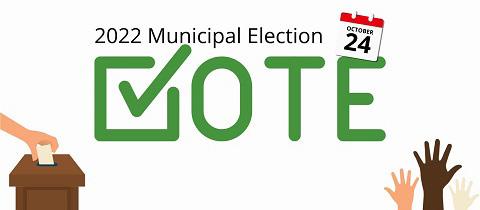
community has helped him realize where improvements need to be made.
“As an actual resident of the ward, I see that this ward is not just a poorer neighborhood of Toronto, but also perhaps the most under-maintained neighborhood,” he said.
“I want to ensure that the ward gets the upkeep it deserves. The council needs a strong, intelligent,
and analytical voice from among the diversity of the city, and I can provide that,” Narang said.
Etobicoke North is located in the northwest corner of Toronto, stretching between the Humber River and Highway 427.
It’s a diverse ward with 58 per cent of the population are immigrants and 76 per cent identify as visible minorities.
Subhash Chand, an accoun-
tant and credit counsellor, has remained invested in his neighbourhood and believes supporting his community through various organized events is why he is a great candidate.
“I am heavily involved in community work. I organized blood donation drives and have donated blood more than 25 times,” Chand said.
Chand said he believes he will be the best representative for this ward because he understands the problems facing the community.
“By developing empathy and compassion, I will be listening to the people’s concerns with an open heart and mind,” he said.
Several former council candidates are running again in the upcoming election.
Christopher Noor, a patio door manufacturer, is running for city council for the fourth time. Noor
said he believes his passion for politics and experience as a leader would make him ideal for the job.
“After getting introduced to politics by my mentor, I began to have a zeal for politics, then I wanted to bring all religious leaders together,” Noor said.
“I have worked on campaigns for members of the provincial parliament and members of parliament,” he said. “I know politics is universal and what’s happening here in Canada affects other countries in the world, like pollution.”
Noor has campaigned on the belief that a more decentralized government is more beneficial and can be one that shows it cares.
With election day just a few days away, candidates are making their final push for votes across the community by speaking to residents. The municipal election takes place Oct. 24.
Heather Robertson, a Ward 12 voter, has issues with how third-term councillor Josh Matlow is handling the issues important to them.
“I think affordable housing [and] traffic in the area that can hurt people who are walking or riding their bicycle, and new development [are the biggest issues].”
Ward 12 - Toronto St. Paul, which includes neighbourhoods like Deer Park, South Hill, Forest Hill, Davisville, and Casa Loma, has four candidates who are running in this year’s municipal election.
Matlow is a well-known supporter of progressive issues like planning and development, parking and traffic regulations and commitment to making the community a better place.
His plan is to improve the official plan to put residents’ quality of life before the interests of developers and a strategic plan to have an age-friendly city for seniors.
Matlow managed to sway 51.6 per cent of the votes last term.
Leonore Wells, an elderly woman who lives in Ward 12, has different views on the performance of Josh Matlow and how he can improve.

“I think it’s difficult. The city is big and there are lots of problems,” she said. “It’s hard to take care of some things but I voted for Josh Matlow in the last election.”
Wells said issues she thinks need to change in Ward 12.
“I think we need more responsibility for the citizens and less about development for the people that
have lots of money,” she said.
The City of Toronto’s census profile of the ward completed for the 2018 election showed the average annual income for Ward 12 is about $155,470 and 27 per cent makes more than $125,000.
Many of the neighbourhoods are known for businesses and people with higher incomes, but it’s also
less diverse than most of Toronto with 72 per cent of residents not belonging to visible minorities.
Candidate Bryan Ashworth is making his first run for a seat at City Hall despite having no prior civic experience.
Ashworth’s plan is to get involved in the city’s needs and initiatives. That would include listening to
marginalized communities and their different experiences with the police, affordable housing, working to maintain the parks and keeping streets clean and safe with ongoing construction in the area.
Cycle Toronto, an organization advocating for bike safety, has called on all candidates in Ward 12 to commit to taking road safety seriously.
Cycle Toronto has a campaign called “Safe and Active Streets for All,” which was a survey sent out to all Municipal candidates “calling for 10 Priority Actions that, if implemented consistently and systematically across all wards, will make Toronto’s streets safe, equitable, sustainable, and healthy for all.”
Cycle Toronto hopes this campaign will encourage any councillor who wins to take these issues into consideration.
Sheldon Hilderbrand is another voter and hopes a lot of residents will cast ballots in this municipal election.
“I think people should vote,” she said.
“If they are feeling unhappy about an issue then they should be able to vote for someone they really believe to be the best candidate,” she said.
 Jordan Griffith News Reporter
Jordan Griffith News Reporter
More than half of the population in Mississauga isn’t Caucasian, and yet there’s only one BIPOC municipal leader on the city council.
Imran Hasan is looking to change that.
“When he (Hasan’s father) came to Canada as a newcomer in 1973, he didn’t have any role models, he didn’t have somebody who [he] could look up to, to help him navigate through the system,” he said.
Hasan said his campaign is a way of providing hope and proper representation for the city he and his family chose to live in for more than 20 years.
“You know, he didn’t have anyone to explain to him the different levels of government services they provide,” he said.
Hasan started his career as a small business owner and has used his skills to give back to his community, including his involvement with a local food bank, and continue the legacy his father started.
“The food bank doesn’t discriminate against anyone when it serves the community. So it was a really good fit for, you know, the whole journey that my father experienced coming to Canada,” he said.
Hasan has been working hard behind the scenes for Mississauga as the vice president of the food bank Eden Food For Change, organizing fundraisers that have raised more than $100,000. He is also the
chair of Peel Crime Stoppers after organizing fundraisers that have raised over $15,000.
Hasan said he’s faced a lot of racism and prejudice on the campaign trail.
Hasan’s signs have been pulled from the ground, thrown about, damaged and stolen but he decided to turn it into a positive moment to give back to the food bank he loves dearly by donating 10 meals for every sign that’s stolen or vandalized.
“There are people out there who want to divide us, but I really feel that there’s a universal message of peace and love that exists,” he said.
This will be his third and last run for council. He said he has learned a lot from the past, knocking on thousands of doors.
“It was a humbling experience, having the door slammed in my face, having people telling me I can never vote for someone like you, or I can never vote for someone with a name like yours,” Hasan said.
Mississauga Mayor Bonnie Crombie introduced the Diversity and Inclusion Advisory Committee (DIAC) in 2014, a group of 24 people from different ethnic backgrounds that provided recommendations, advice and information to the local government.
Crombie said the idea of giving non-residents the right to vote came up in council. The issue was brought to DIAC to get perspective from a diverse committee and they said no.
“I know, the very group that was our lens to the diverse communities
to give us input on what was the right direction for our policies said no and that’s why we adopted that position because counsel was ready to move forward,” Crombie said.
“In their view, the vote was sacred,” she said. “They struggled to get their citizenship, and they felt it was a right of citizenship to have a vote.”
Crombie said she thinks public institutions like the city of Mississauga should work to reflect diversity in the community of Mississauga. Now, with incumbent Karen Ras in Ward 2 moving on into a new role, and Councillors Pat Saito in Ward 9 and George Carlson in Ward 11 retiring, there’s an opportunity for new openings to be filled.
“This time around the slate of candidates I think in every word is more diverse than ever and I have always encouraged people to get out and get involved, whether putting their own name forward or researching their candidates and getting involved in their campaigns and assist them,” she said.
Mississauga resident Delroy Gordon Jr. said the decision not to let permanent non-residents vote disheartened him. Gordon Jr. was born and raised in Jamaica and moved to Canada when he was 13 and feels he isn’t being represented.
“When it comes to government I think it should reflect what the community looks like and I think that you should let the community decide but some of us don’t even get the chance,” he said.
Brampton city council candidate and native, Rafiqul Islam, is hoping to bring positive change to the city he calls home.
He’s running for councillor in Ward 1 and Ward 5 in Brampton.
Each councillor in Brampton represents two city wards. The city councillor position is currently held by Rowena Santos, who is running for re-election.
There are six other candidates in the race for councillor, including Stacey Ann Brooks, Steven Lee, Omprakash Kapil, Tracy Pepe and Harshmeet Dhillon.
Islam has worked as an IT professional for the past 34 years and has lived in Brampton for about 24 years.
While he’s running for councillor, Islam didn’t see a potential career change as part of his future.
“I wasn’t always interested in politics, but my volunteer work is really what changed my mind,” he said.
He started volunteering 15 years ago by participating in various community services, including at his local mosque as well as youth soccer and badminton teams.
Most recently, he’s been spending some time volunteering at badminton clubs.
Islam’s volunteer work in previous elections is what inspired him to run for the 2022 municipal election. During previous elections he said he had an interesting observation.
“The first thing I saw everybody complain about was that they only saw candidates during election time, they felt like they didn’t see them frequently outside of that,” Islam said.
Islam said intends on improving the lines of communication between politicians and their constituents if elected.
“Every leader has to be willing to communicate with the com-

munity and listen to their concerns in order to fix the communication gap,” he said.
One of the biggest community issues he promises to address is public safety. Islam recounted an experience he had where a friend of his had his car stolen and this event is what sparked his commitment to improving public safety issues.
He hopes to create a community that has a steady police presence to monitor the areas most at risk. He also said he wants to make it easier for community members to communicate among each other to build a better sense of trust.
The third item on his list of goals is to improve infrastructure planning.
While he may not be able to change the bus schedule, he wants to adjust the construction schedule. Recently, one of the main roads was being repaved right around the time school opened, which can be a busy time for all commuters.
Islam is a candidate who wants to be a voice for people in the community who feel like they aren’t being heard.
“Councillors have to be vigilant. They have to be committed, and the support is what’s needed for the community to help each other,” he said.
“We have to ask the citizens of Brampton what they think the problems are and I don’t see anybody doing that.”
Billions of viewers are expected to watch the world’s most anticipated sporting event set for late fall in Qatar, but what they may not be aware of is the human cost involved in staging the World Cup. A bid to host the FIFA World Cup in Qatar was selected in 2010. FIFA’s then president Sepp Blatter — a man with a stained reputation for his many corruption scandals — proudly announced Qatar would be the 2022 host. The organization has been in the crosshairs of the U.S. Department of Justice since then, resulting in the first indictments in 2010 and accusations by the U.S. that Qatar bought the games, which it has denied.
There were immediate concerns from fans and football organizations over Qatar’s lack of participation in the sport throughout history, spotty human rights record as well as their dangerous climate conditions during the summer.
The Middle Eastern nation is by far the smallest nation to ever host a World Cup, three times smaller than the previous record set by Switzerland, with a population of just 2.8 million as of 2020. Questions were raised as to how and
when the nation could build so many stadiums by then.
This is when the tournament host became a mass graveyard.
In order to construct seven state of the art stadiums built in and around the capital city of Doha to host the 64 matches, Qatar decided to mass emigrate workers from Third World countries in order to work day and night building these glorious stadiums.
This led to a confirmed 6,500 migrant workers dying, with 38,000 work-related injuries in 2020 alone. This occurred during the rapid construction of stadiums, hotels, an airport, and even an entire city for the World Cup.
The workers came from nations such as India, Pakistan, Nepal, Bangladesh, and Sri Lanka.
Considering official Qatari reports, 15,021 non Qataris died in the country between 2010 and 2019 leading many to suspect the numbers of worker deaths to be higher than what was reported.
Allegedly these workers could have died for several reasons; including poor health, safety regulations, suicide, cardiac arrest and heat stroke caused by weather which often exceeds 50 C in the Gulf.
Although the formerly guilty FIFA president has since been banned from the sport until 2027, the new leaders in charge are simply no different.
When asked about the human rights issues and mass deaths in Qatar, current FIFA president Gianni Infantino said the migrant workers gain “dignity and pride” for their hard work.
As the new leader of a stained organization such as FIFA, Infantino’s lack of sympathy is a sign to football fans that money will always be FIFA’s priority, considering Qatar’s bid to host the World Cup was confirmed to have involved millions of dollars in bribery according to multiple reports that corroborated this claim.
The real disappointment for football fans is that players and participating nations have not elected to step down from their place in Qatar.
Every football player’s dream is to be on the pitch at a World Cup, but how valuable is a career accolade achieved with thousands of families mourning the deaths of their loved ones?
In order to counter FIFA’s decision
to stand by Qatar, qualified nations should have refused to play in the host nation the moment they heard about the human rights violations.
Football icons such as Eric Cantona and Philipp Lahm have boycotted the upcoming event, criticizing former teammates and their nations for participating in the tournament.
There have been instances where countries like Germany, the Netherlands and Norway have worn shirts with messages before matches to protest human rights violations.
But it’s not enough for change. Denmark has gone as far as designing an all-black jersey to be worn at the World Cup to honour the migrant workers who died. Denmark’s kit manufacturer Hummel described the jerseys as “a colour of mourning” on their social media.
This may be a statement that raises awareness to viewers who have not heard about the atrocities, but at the end of the day Denmark is still scheduled to face Tunisia on Nov. 22.


As the municipal election nears, many young people are wondering whether they’ll vote this year.
This might be a very straightforward answer but for others, it’s much more complex.
According to Statistics Canada, the voter turnout rate for people aged 18 to 30 was only 52.5 per cent in the 2018 municipal election. While people aged 47 and older had a turnout rate of 77.7 per cent.

When comparing the two age groups, there’s a notable difference. Younger generations are growing up in a very different world, a world where striving for change is pushed with resources like social media and various forms of protests.
Many believe young people just don’t care about politics but in reality, young people all across Canada constantly challenge old and outdated values.
Generation Z has a reputation for being social justice warriors, some-
thing that’s amateurish, yet at its core it is a strong belief in our democracy and a fight to improve it.
The real problem that many young people face when it comes to voting is time. A lot of us are in college and have to work minimum-wage jobs to support ourselves.
Statistics Canada said 25 per cent of young voters did not cast a ballot in the 2021 federal election because of their busy schedules.
Even though this is a statistic on
the federal election, it gives a good idea of one of the main problems with voting in Canada.
Voting can be secondary for everyday Canadians trying to support a family and have a million other commitments.
This is a time that some people don’t have and therefore cannot afford to vote simply for this reason.
There is a solution to this problem: virtual or online voting. The only obstacle is a lack of provincial standards for online voting. Depending on what municipality you live in, there might not even be an option to vote online. Vaughan allowed online voting in this year’s municipal election.
Another reason could be that some people might not understand the importance of a municipal election. Many young people only tend to focus on federal and provincial elections.
Personally, I’d rather vote in the municipal election instead of the provincial or federal election. The problems discussed are more relatable to me since it’s in my own
community.
Another way to look at this situation is saying young people just don’t care about politics and for certain people that is true.
Statistics Canada also reported that 33 per cent of eligible Canadians didn’t vote in 2021 because they didn’t care about politics. This was the most common reason for not casting a ballot.
The problem goes beyond age. Some people just don’t care about it and have given up hope in voting. People have simply lost hope in empty campaign promises that never seem to come true. It makes us wonder if our votes even matter.
The truth is that your vote does matter, if you feel strongly about making a difference in your community and city, voting should be your main priority. Every vote counts and it is important for all Canadians to participate in their civic duty to vote in every election.
Not everyone will be happy with the results of an election but that’s what a democracy is all about.
 Samantha Little Political Editor
Samantha Little Political Editor
Iam bisexual.
It’s taken a long time to come to terms with this.
In life we often face choices. Our choices determine what we do, and our happiness, sometimes even affecting those around us. I’ve never been good at making choices and I’ve learned there are times when that’s okay.
According to Statistics Canada, as of 2018, four per cent of the population aged 15 and older are members of the LGBTQ+ community, including 332,000 bisexual women. Those who identify as bisexual feel a sexual and/or romantic attraction to people of a different gender as well as their own. A fairly basic definition, but not all encompassing.
The “bisexual community” includes those who identify as bisexual, pansexual/omnisexual, biromantic, polysexual, or sexually fluid.
As a kid, I was closed off from the world, yet, I’ve always known I was bisexual but never had the words to define it. I was taught that girls like boys and boys like girls.
This made my life confusing because I always thought something was wrong with me since I wasn’t following the path society laid out for me.
“Who do you have a crush on,” a girl in my class asked me in middle school.
She was crushing on the boy every other girl had a crush on.
Little did she know I was crushing on her. I’d never admit that at the time, so I picked a random boy that ran past me.
As I grew older, I became familiar with the gay community
after a girl I knew came out as a lesbian. Her bravery brought me hope.
That was until I watched the other girls isolate her, fear her, and make fun of her. They turned her into a pariah.
After that, I quickly forgot about coming clean about who I was. I couldn’t. I already had a hard time connecting with people since I wasn’t very social. I couldn’t risk losing the few people I had.
In high school, I had my first boyfriend. Having someone to share my love with made me happy, but I was now more confused than ever.
I thought I only liked girls, but I was dating a boy. My mind was racing in all directions, I was
unsure of what to do. So I left him. Was I straight, was I gay? I could never make a choice. Then I found out what bisexuality was, and that was one of the best days of my life.
One label became an answer to all of my uncertainty.
Though I’m glad I found a term to define myself, it’s not without confusion. Especially when society is constantly pushing you to pick a side. Neither side fits you, so you’re stuck in a void between them both.
You’re not gay enough for the gay community, but you’re not straight either. This causes biphobia, prejudice, fear, or hatred directed toward bisexual people. It’s the use of myths and stereotypes that undermine bisexual legitimacy.
The most common stereotype
I’ve heard is that people believe bisexuals are more likely to cheat. Another is “bisexuality is a phase” or “bi people are greedy.” These stereotypes and assumptions occur both within and outside of the LGBTQ+ community.
These statements are hurtful because they judge bisexuals’ character solely on their sexuality.
Now I have a boyfriend who I’ve been dating for two years. Many people assumed my attraction to women was just a phase. However, even though I’m in love with a man, that doesn’t mean I am no longer bisexual.
I will always be bisexual regardless of who I’m with.
In the end, love is love and who someone’s with shouldn’t matter.
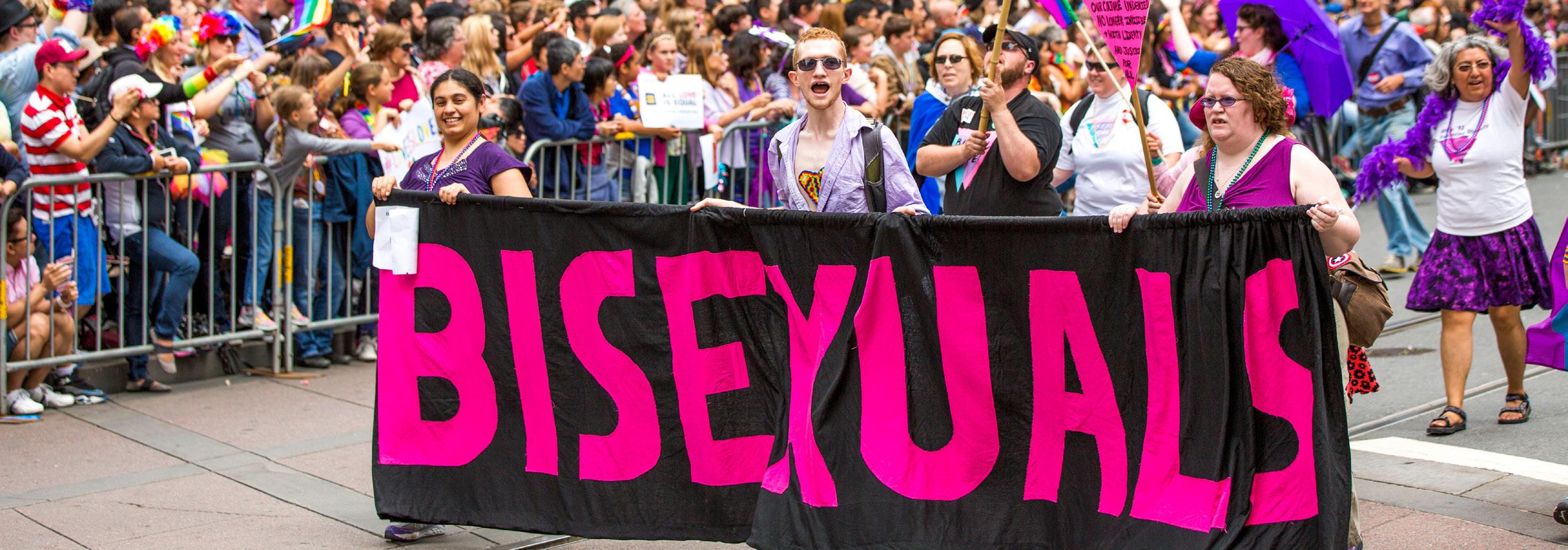
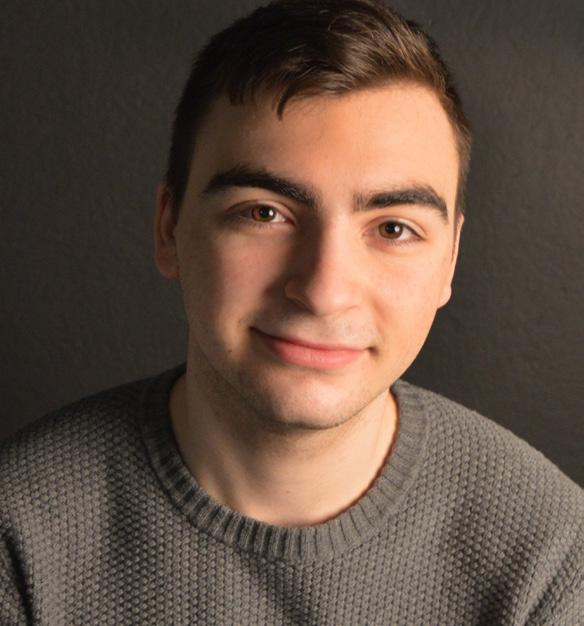 Andre Leal Reporter
Andre Leal Reporter
In Mexico, 36 years ago, Canada competed in its first-ever World Cup. They finished with no points in the group stage and didn’t score a single goal. They crashed out of last place out of the 24 team competition.
Looking at the modern Canadian team, this winter’s World Cup should realistically have a better outcome.
However, this won’t be a walk in the park.
This competition will have 32 nations in eight groups and in Canada’s group Belgium, Croatia and Morocco, form a miniature group of death.
Belgium is ranked second in the FIFA rankings, and Croatia was in the World Cup final in 2018. Those two nations will be the toughest opponents of that group.
Anything can happen in sports, but the fans shouldn’t be too disappointed if Canada can’t take down the mighty Belgium. An ideal result against Croatia would be a draw while a win against Morocco is a must if they want a chance to
qualify for the knockout stages.
If Canada finishes second in their group, they will most likely face either heavyweights Spain or Germany in the first round of the knockout stages. The two nations regularly find themselves at the quarter-finals, if not further.
It’s safe to say that there’s a mountain to climb ahead, but qualifying for this World Cup within itself after all this time is a huge step in Canadian soccer.
A major difference between this team and the team 36 years ago is talent. The ‘86 team in Mexico had a handful of players who didn’t even play professionally.
This edition of the national team has a Champions League winner in Alphonso Davies, currently playing for German giants Bayern Munich and is largely considered
one of the best left-backs in the sport.
Also on that team is Lille’s prolific goal-scorer Jonathan David, whose nine goals in 11 games this season placed him tied with PSG’s superstar Neymar astop scorer in Ligue 1.
Solidifying the midfield is Leamington, Ont., native Stephen Eustáquio who currently plies his trade at FC Porto, currently in second place in Portugal’s top league.
This Canadian team has many other players in Europe’s top leagues, including veteran midfielder Atiba Hutchinson, captain of the Turkish league club Beşiktaş, and forward Tajon Buchanan, who plays for the Belgian First Division
A side Club Brugge. That is unlike the team from more than three
decades ago.
Popular sports betting site Bet365 has Canada at +20,000 odds to win the World Cup. Everyone will be expecting Canada to come in as underdogs, but I think a lot of people will be surprised by this team.
To play in Qatar, Canada competed in the Confederation of North, Central America and Caribbean Association Football (CONCACAF) qualifying group. They finished comfortably on top over Mexico and the U.S., who are usually staples to qualify for every World Cup. Canada finished unbeaten in qualifying for an impressive 17 games.
So, when people say that Canada has no chance of competing with the “big nations” in this upcoming competition, I think they’ll be shocked.
 Hawi Tulu News Reporter
Hawi Tulu News Reporter
The right to vote is a human right. But many in Toronto don’t enjoy this right.
According to a 2016 population census, Toronto was home to 1.27 million foreign-born individuals, the largest number among Ontario municipalities.
A lot of them can’t vote.
Although voting expands beyond race, sex, and class, non-citizens remain the one group still powerless.
The concept of democracy and
voting rights are closely tied to citizenship, but non-citizens pay taxes. Taxes are a pillar of democracy. Still, they can’t vote, something that directly impacts their livelihood.
Tax money helps fund police, schools, and transit services. How those services are positioned should be a decision made by the people, not some, but all.
In the GTA, the voting restriction is lifted if you are a permanent resident and own property.
Many argue people who invest in the city should have the right to vote, but investing shouldn’t be limited to money. That includes labour, too.
Residents who work daily are also stakeholders in the country. Individuals who work and pay taxes should have the right to vote regardless of their citizenship status and be allowed to choose who represents them.
The large portion of residents not being able to participate politically leads to a problem of democratic legitimacy.
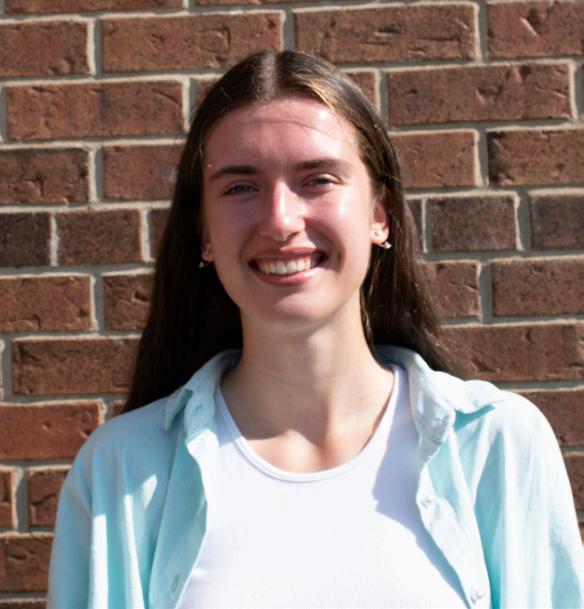 Angelina Kochatovska News Reporter
Angelina Kochatovska News Reporter
High-profile cases of people being attacked at public transport or subway stations in Toronto have been rampant. However, the mayoral candidates for the upcoming municipal election remain silent.
There are no public police reports or TTC statistics on the number of safety incidents that happened in 2022.
Yet, I’ve heard many anecdotal stories from attacks on riders and while some of them were reported to the police or TTC workers, other cases remain unreported. My case is one of them.
The law is not considerate, regardless of how long non-citizens lived and contributed to the betterment of the country. If you are not Canadian, there is no power to decide how the tax money you pay is spent.
Non-citizens live in the same neighbourhoods as citizens and should have a say in how to shape the places frequently visited. Perhaps municipal voting should not only be preserved for Canadian citizens.
Democracy would significantly advance if non-citizens are included in voting in municipal elections.
Some provinces like Nova Scotia have started allowing voting rights to permanent residents.
Allowing permanent residents to participate in municipal elections is essential as they can generate much needed change.
The working class is not specified for permanent residency. There are a lot of large groups without Permanent Residence status who volunteer, create jobs, and work in
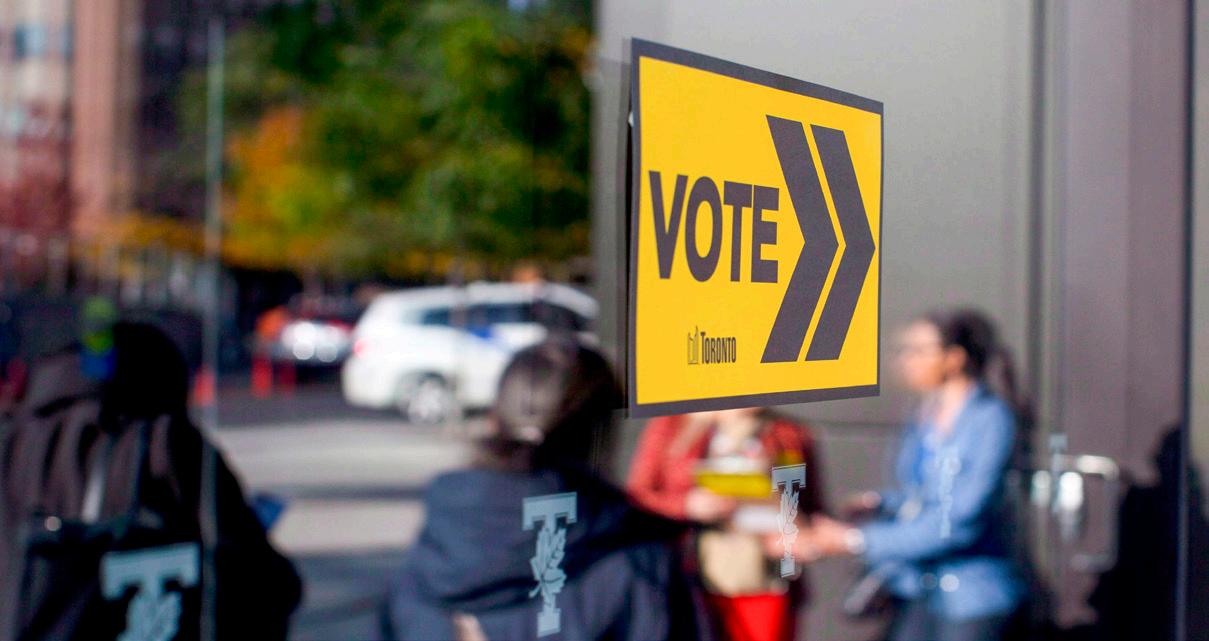
our communities.
Extending the right to vote for everyone might take years to implement, but it’s worth it.
According to the Canadian Civil Liberties Association (CCLA), countries such as Sweden and New Zealand have implemented voting rights for non-citizens, being allowed to vote after residency of three years and one year respectively.
The precedent has been set in other successful democracies and

TTC safety, an issue many have looked for action to be taken on has been ignored by municipal canditates.
I was attacked on the platform at York Mills station. It was a Sunday morning last January and I was going downtown with my roommate. We went down to the subway talking about something when I noticed something strange and turned around.
I saw a man who was staring at me. When he realized we were looking his way, he started to scream, “You’ll die.”
My roommate and I tried to get away from him. The faster we walked, the faster he followed us and screamed, “You’ll die.” I remember how I tried to catch someone’s eyes on the platform to help us. Nobody interfered.
In a second, the man was between me and my roommate, touching my shoulder. I decided to play dumb and was going to say, “Sorry, we don’t understand you.”
But he aggressively pushed me when I started to talk.
I didn’t fall onto the rails but I was close enough. He pushed me hard enough that I nearly fell to the ground. I’ve never been afraid for my life like that before.
Then, I heard two women standing by and started to scream at the man. He fled.
I felt embarrassed about my
we shouldn’t fall behind in this regard.
We need to ask how we can help build a safe and suitable city for ourselves. If we have residents who picked our city and are working with us, we need to be able to include them politically too.
It can’t be said anything about the power of the people.
Democracy can only exist if the people are in control. More than half of the people in cities like Toronto are voiceless.
cries, that I couldn’t protect myself –– the helplessness I felt.
The women told us that they saw that man before at the same station and using the emergency button in such cases so support staff could arrive at the platform would be a good solution.
“Having more support (from) staff around could really prevent situations like this from happening,” said Shelagh PizeyAllen, the executive director of TTC Riders, an advocacy group for Toronto Transit Commission users.
I was afraid to use the subway for two months after that incident, when I finally needed to commute by subway, I made sure to avoid York Mills station.
“Multiple hundreds of people responded to our online survey about their safety concerns and many people said they would like to see more support staff,” PizeyAllen said.
“If there are not many people around the platform, you feel more isolated and there is no one around to ask for help,” she said.
After the attack, I stand by the emergency button. Just in case.
Amber Morley, a candidate running for city councillor in Ward 3, is a strong advocate for affordable housing, having been raised by a single mother in a low-income neighbourhood.
“Housing is an important issue for me and my campaign. It’s also one of the number one issues we hear from people at the door that they’re concerned about,” Morley said.
She called housing affordability a crisis, and said people looking for supportive housing or to purchase a home have limited options.
“We need to get a mix of housing right in our ward,” she said.
“We see a lot of luxury, for-profit condos, but very little if any negotiation for affordable units in those new developments,” Morley said. “That is an area I will get to work on immediately.”
Many of those luxury condos remain vacant, and lower-income people end up being forced out of the market.
Addressing poverty remains an important issue for Morley.
“It’s one of my top three pillars. I understand the challenges of pov-

erty and what people are facing,” she said.
“We have not done a good job as a city in actually investing in our poverty strategy. We adopted it in principle but we have not addressed this key issue directly,” she said.
Marco Valle, another candidate, wants to communicate with residents and voice their frustrations and concerns.
“Citizens provide input to committees. But usually, things get reported in the paper by the time
they’re in city council,” Valle said.
“Then, citizens don’t have the ability to provide input,” he said.
Valle said Toronto has not done a good job in addressing neighbourhood safety.
“There are options, but we’ve explored none of them. They tell us about how much violence there is but they don’t do anything,” he said.
Valle said he believes a sense of community is essential for neighbourhood safety. He supports police officers working in a very small area so residents know them personally.
“If you don’t feel safe, you’re not gonna meet the people around you,” Valle said.
He said that despite Etobicoke-Lakeshore being such a large ward, it doesn’t have many community centres, pools, or services for seniors. The ones that do exist are being eliminated.
Mary Markovic, another Ward 3 candidate, is also fighting to make her community a safer place.
“I was canvassing and spoke to a woman who witnessed a shooting,” she said.
“She said she was afraid to leave her home, especially in the evening. These things used to be so rare in Etobicoke-Lakeshore but now it’s almost becoming a daily occurrence,” Markovic said.
However, Toronto Police statistics for 22 Division report 12 shootings and firearm discharges reported so far this year, a 20 per cent decrease for the same time period last year. There were nine victims, four of whom died.
If elected, she said she would work with police, community groups and the TTC to help make this ward safer. She also wants to bring back community watch groups.
“Our mayor is failing us. If he’s
the leader he’s supposed to be, this should be one of his priorities. People don’t feel safe. In my opinion, Toronto’s getting worse,” she said.
Bonnie Hu, another candidate running for city council, said housing was a very important issue for her as a young student renter.
“I’m a renter. I’ve seen how much I pay in rent go up over the years,” she said.
“I’m worried there will be a time when I won’t be able to live here anymore. I’ve already seen young people move out,” said Hu, who expects to graduate from U of T in 2024 in Urban Studies.
Hu is a supporter of multiplexing, which divides a lot for a single family home into several units. The current number proposed is four.
“We need more housing. There is not enough supply. People are moving in very fast, but there’s not enough housing for them,” she said.
Hu also believes young people like her deserve more of a voice in politics.
“I believe incumbents have too much of an advantage, they stay there for years and sometimes decades and I believe there should be some newer voices to be heard.”
Mayoral candidate Sarah Climenhaga intends to be a mayor who will bring students into the process of making decisions in Toronto.
“Students are a vital part of our city and I want them to not just vote, but get involved in designing their city so they get what they want from it,” Climenhaga said.
“I want to work with students to get more housing options for them, to drop mandatory fares for TTC, and to integrate the environment in all of our city decisions.”
Toronto’s next municipal election will be held on Monday, Oct. 24 where Climenhaga is among 31 candidates looking to replace current Mayor John Tory, who is running for his third term.
There are more than 1.89 million eligible voters in Toronto who will vote to elect one mayor, 25

councillors and 39 school board trustees from four different school boards.
Voting will take place at 1,460 voting stations across the city. One councillor is voted in each of the city’s 25 wards.
Climenhaga looks to drop bylaws that prohibit alcohol in parks, permit systems that inhibit
spontaneous art and music in the streets and establish clear, high and well-enforced standards in the city to protect parks, land, water and people.
She also wants the municipal government to support freedom of choice when it comes to individual medical decisions.
Municipal governments are
responsible for many services that affect their residents daily, including maintaining and managing roads, water, sewage, public transit, waste, land use planning, emergency services, libraries, parks, economic development, and animal control.
“There is a massive drain of public money through unaccount-
able and ineffective developer tax breaks,” mayoral candidate Robert Hatton said.
“You are witness to a lack of leadership on local services, affordable housing, transit, climate change, even Ontario Place,” he said.
Mayoral candidate Darren Atkinson is looking to restructure city services to be less of a financial burden on residents.
“We need to rebuild the core services of Toronto together in a fiscally sound way so that everyday life is just not about financial survival,” he said.
To be eligible to vote in the election, a person must be a Canadian citizen, at least 18 years of age, and a resident of Toronto.
People who are non-residents of Toronto can vote if they or their spouse owns or rents property within the city. Students studying in the city but who don’t live in Toronto full-time are also eligible.

Gil Penalosa speaks to supporters following his campaign
Gil Penalosa is a prominent urbanist who is considered John Tory’s main rival.
Penalosa is the founder and chair of the non-profit 8 80 Cities, an organization that advocates for more equitable and sustainable cities. He has worked in more than 350 cities across all continents. Before immigrating from Colombia 23 years ago, Penalosa was the parks commissioner for its capital, Bogota, where he oversaw the construction of more than 200 parks.
“I am convinced that Toronto is moving in the wrong direction,” he said. “In the last eight years, it has become less affordable, less equitable and less sustainable. I have the experience to turn this around, we need a city that is radically different.”
Penalosa’s vision is to create a Toronto that prioritizes public transit, bike infrastructure and walking over the needs of cars.
An avid cyclist, Penalosa wants to build 300 kilometres of pro-
tected bike lanes across Toronto. He also believes street lights should automatically turn green for transit and plans to build 52 kilometres of rapid transit with dedicated lanes.
“Why is it that 100 people in a streetcar don’t have the right over one person in a car? It should have the right of 100 cars,” he said.
In Toronto, Penalosa said 24 per cent of streets do not have a sidewalk. He believes that sidewalks are key to building a sense of community.
“On the streets, people are going from point A to point B,” Penalosa said. “On the sidewalks, people are meeting boyfriends and girlfriends, they can meet new people. Twenty-four per cent of our streets do not have that story.”
Affordable housing has consistently been the most important issue for Torontonians. Penalosa said that over the past eight years, it has only gotten worse. He wants to change zoning laws so that it is no longer 80 per cent single-family housing.
“We are going to end that citywide,” he said. “Anybody with a house will be able to divide the
house, so one house becomes four. We are calling this the renovation revolution because it is going to be massive, thousands of new units everywhere.”
To protect renters in the city, he plans on introducing colour-coded RentSafe signs similar to what exists for restaurants.
He also plans to introduce rent control for all buildings that receive public funding if elected, as well as advocating for the province to bring back rent control for all tenants.
“Tory has voted many times against colour-coding,” Penalosa said. “We will use this to force owners to keep units in shape. Green if it is good, yellow if there are some problems, and red if it is bad and then the city will be forcing them to bring it up.”
Penalosa said Toronto is a city which works for a very small number of people and leaves the rest behind.
“I will always support the most vulnerable,” he said. “The most vulnerable by age are small children and the elderly but also all the poor, people with disabilities, the

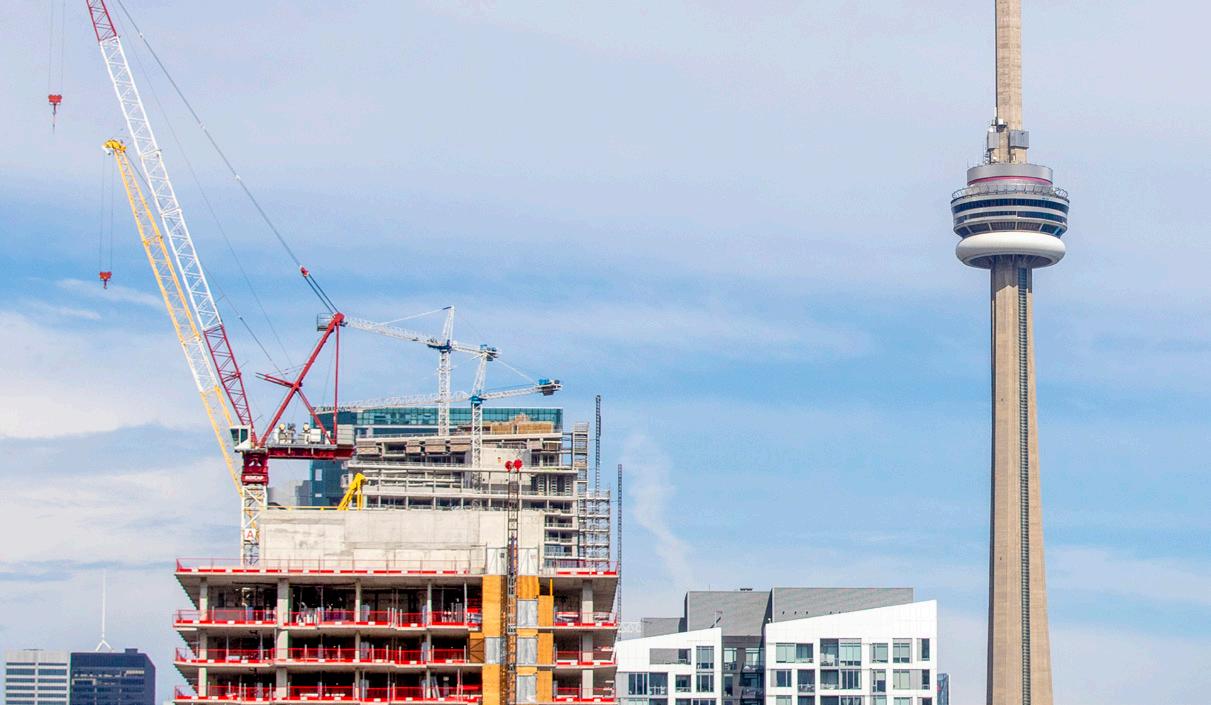
donations to municipal candidates wield a disproportionate amount of influence at city hall.
The #NoDeveloperMoney pledge is asking municipal candidates to reject donations with ties to the development industry.
“As of July 2018, the City of Toronto had a population of 2,956,024 and yet only 5,504 donations were made to the municipal election,” said the Association of Community Organizations for Reform Now (ACORN).
“This means that approximately 0.2 per cent of the population contributed to the campaigns of winning councillors,” ACORN said.
After the 2018 municipal election, ACORN published a report that looked into campaign donations. They found that more than 34 per cent of donations made had ties to the development industry.
As a result, questions are being asked about the influence these donations have on municipal leaders.
ACORN said this small minority wields a disproportionate amount of influence at city hall. City councillors are responsible for regulating planning and development in the city. No other industry is as invested in municipal elections.
As a result of this report, former NDP candidate Diana Yoon, created the #NoDeveloperMoney pledge, where corporations are not able to make direct donations to municipal campaigns. These donations are made by
Kamika Sylvester and her husband accepted job positions in Grande Prairie, Alta., and said that the financial freedom it gave them was worth the move.
“We both really wanted to move out of our parents house,” she said. “But we didn’t want to be struggling financially and just working to pay the rent.”
Sylvester made the move from Brampton in June 2022 and said accepting a nursing contract in the province had changed her life.
individuals with personal or professional ties to corporate development.
“It is important to have some transparency and accountability from our candidates as development is so much of the conversation,” Yoon said.
“That’s the job of a counsellor, to have to work with developers or corporate landlords that are in your ward, but it’s all about are you going to put people first,” she said.
Community organizer Jessa McLean said the pledge brought attention to a topic that is usually ignored. By bringing this to the forefront, it forces candidates to acknowledge the influence this money has.
“It really shapes our communities when they’ve got such an influence in municipal planning through paying for these campaigns and I would say buying elections,” McLean said.
“Are communities being planned in ways that are healthy for us? They are planned based on what the best need is for the developer,” he said.
While the topic of corporate money has gained attention in urban elections, McLean said more attention needs to be drawn to suburban and rural communities. In those races, corporate donations wield a great influence over the outcome of elections.
“You see new suburbs pop up all the time, without any infrastructure such as public transit, without any places to build a community around,” McLean said.
She heard of the “Alberta is Calling” campaign, sent out by the Alberta government in early August to encourage young, skilled workers to consider starting their life there.
Campaign ads on the walls of TTC subway stations across Toronto say things like “A nurse, a programmer and an electrician all walk into a province. They all get jobs.”
Another 30-second ad can be heard on the radio, where a young man’s voice details his move to Alberta, and how the province offers higher salaries, lower taxes and a lower cost of living.
“Already, you’re starting at a higher rate just working across the country as a staff nurse,” Sylvester said.
According to the Government of Canada’s Job Bank, the average hourly wage of a registered nurse in Toronto is $36, but in Alberta, it’s $45 per hour in the Grande Prairie region.
Sylvester said there are staffing shortages across Alberta and that Alberta Health Services (AHS), the governing body for health care, is willing to pay higher premiums to its staff on top of the hourly wage. It didn’t stop there as they also said they would cover the cost of a vehicle, accommodation and food.
There are similar nursing contacts in northern Ontario like the one Sylvester took in Grande Prairie, but she made the decision to move to Alberta for more than just the higher pay. Housing affordability was just as enticing.
“The cost of living in Ontario is

just astronomical,” she said. “And for someone who’s young, I’ve graduated, I got married, I wanted to move out and buy a house, it just was not possible.”
Sylvester and her husband looked at a newly built house with high-end gold-coloured finishes in a brand new development. She compared it to house prices in Toronto and guessed it would cost $1.5 million there, but was listed for $500,000 dollars in Grande Prairie.
“The housing affordability is there,” Sylvester said.
Michael Mak, a senior analyst in economics for the Canada Mortgage and Housing Corporation (CMHC), said housing trends in urban areas of Alberta like Calgary and Edmonton were steadily increasing in 2020 and 2021, but is seeing a different trend for 2022.
“Interest rates are getting higher and people aren’t in that much of a rush anymore,” Mak said.
The Canadian Real Estate Association (CREA) shows the average townhouse in Toronto costs around $990,000 and Calgary’s average cost of a townhouse is around $315,000.
Mak said Calgary and Edmonton, along with the rest of Alberta, have had more supply and construction starts than higher priced cities like Vancouver and Toronto, making homes more affordable.
“In most recent quarters, what’s interesting is that we had an extremely large (number) of Ontarians move to Alberta,” he said. “So the inflow from Ontario has doubled the outflow from Alberta to Ontario.”
Statistics Canada shows that Alberta’s population grew by 2.2 per cent last year, and about 6,000 people from Ontario moved to the province between April and the end of June this year.
Peter Navales, a computer engineering student at Humber College, said he would move to Alberta from Mississauga if there was a “better opportunity” for him.
As Alberta continues its recruitment drive, quick witted ads continue to dot Toronto’s landscape.
“What did the Albertan say to the Torontonian? You’re hired,” said an ad in the Yonge and Bloor subway station.
THE CANADIAN PRESS IMAGES / LARS HAGBERG ACORN says developers’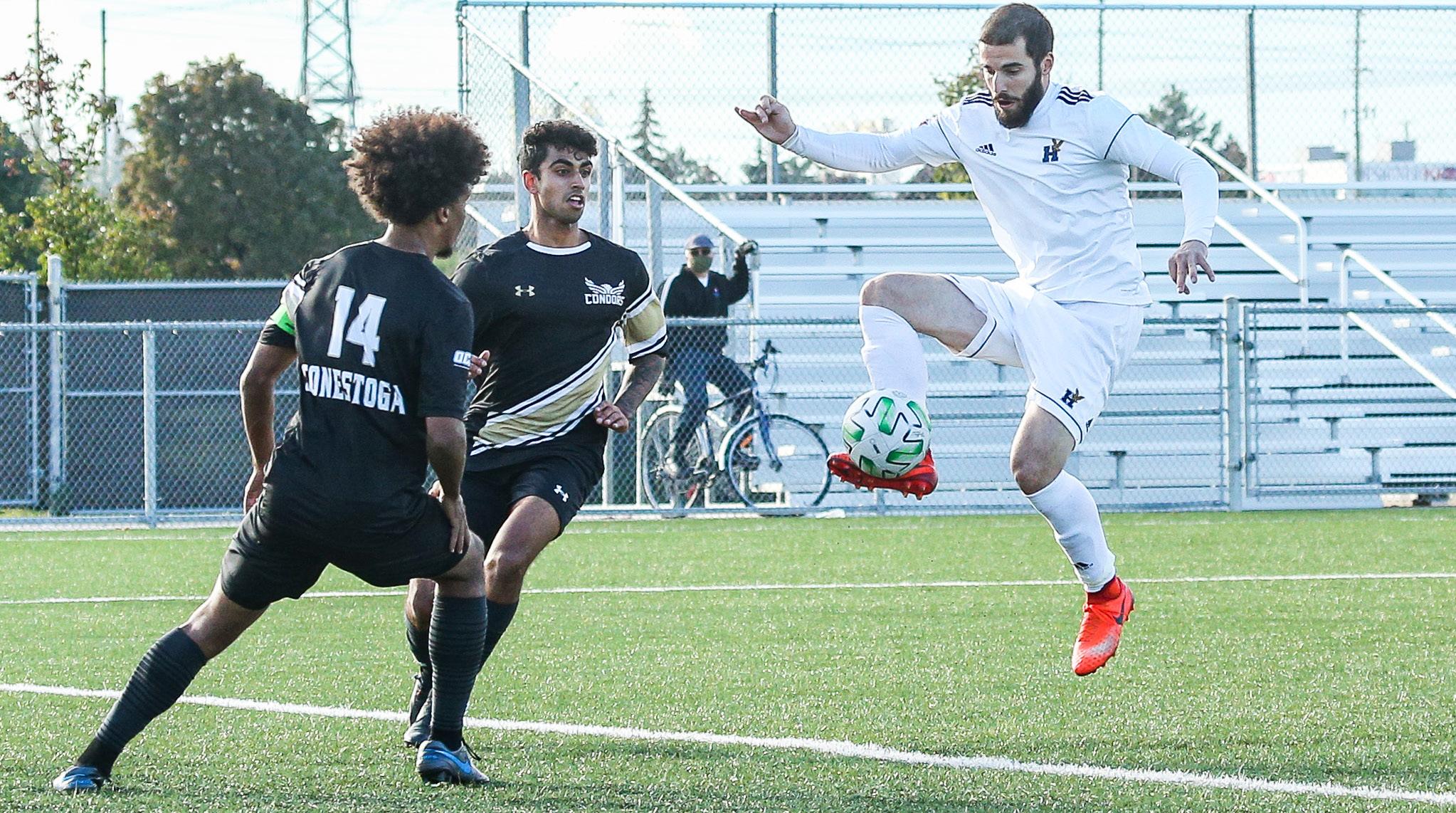
Andre La Rosa-Rodriguez
News ReporterHumber varsity’s Hall of Fame class of 2022 inductees looked back on the close relationships they fostered during their championship-winning seasons.
“The bond we had as a group is something special,” former Humber Hawks soccer goalkeeper Eugenio Garro said.
“It’s your family, away from your actual family,” he said.
Five soccer players were added to the Humber Hall of Fame this week: Garro, Gerardo Magno, Kingsley Boasiako, Jaineil Hoilett,
and Marcos Nunes. They all took part in creating Humber’s winning culture in soccer.
Of the many highlights in Garro’s Hawks career, winning the Canadian Collegiate Athletic Association (CCAA) national championship final in 2012 against Vancouver as a Hawk and ending the school’s 10-year championship drought was one of his favourites.
“It’s been 10 years since the championship in 2012, and it feels like yesterday. I can go back and I remember everything,” he said.
“It’s what started it all.”
Garro started his goalkeeping career only after having tried other
positions. It took one game in the net for him to decide that he “never wanted to leave.”
His most memorable moment was the 2015 CCAA national championship final in Quebec, however, winning in a penalty shootout after the team had gotten two red cards. He said what really made it special for him was that he was able to share it with his family, who had come to cheer him on.
Former midfielder Gerardo Magno also reflected on the 2015 final. He said that having Garro in the net meant the game was “in the bag.”
Magno began playing soccer
when he was young and made his way through multiple academies before joining the Hawks. He said being inducted reminded him of all the hard work that he put in, the good times he had, and the championships he won with the team.
But he said what he misses the most is his teammates.
“I miss hanging out with the guys before training sessions, I miss hanging out after, the road trips, all the trips we have done,” he said.
“We haven’t seen each other in a while, but they’re my brothers.”
Former centre-back Kingsley Boasiako said that while he’s excited
to be going into the Hall of Fame, he is more excited that he will be going in at the same time as his teammates.
“A lot of those guys I still keep in touch with,” he said. “I’ve been to their weddings. It’s become a family.”
Boasiako played house league until Grade 10 where he began to take the sport more seriously. But he said the challenge came when he was told he wouldn’t make it at the college level.
“I just really tried hard. I guess I got better with the passion of the game,” he said.
After starting out as goalkeeper, Boasiako moved on to striker and eventually found himself fitting as a defender the same position his three brothers and his father played.
He said it was his family that supported him playing as a centre-back and that his friends would find a way to come see his games.
The win at the 2015 CCAA final in Quebec was also his favourite moment in his soccer career.
“Our team went head-on with adversity, we all gave a bit extra and were able to win the game,” Boasiako said as he recalled the two red cards the team received within 30 minutes that made them initially unlikely to win.
“It’s one of those stories you take away and you tell your kids, your family and friends about.”
He was unsure if he would get chosen for the Humber Varsity Hall of Fame as he felt that almost anyone from that team deserved to be there.
But he’s happy that he will get to share this moment with his teammates, friends, and family.
The players will see each other on Monday, Oct. 24, for the induction ceremony.
Alicia Hayes, a Hawks Rugby 7s back who is also an Addiction and Mental Health student, said she has struggled with balancing her athletics and classes.
“I have felt exhausted trying to balance classes and game preparations as I also work a full-time job and have other obligations,” Hayes said.
Balancing student life and sports can be stressful for varsity students, especially as the fall season goes on as preparations for upcoming midterm exams and OCAA championships.
Their routine can bring anxiety and exhaustion into their lives and for that athletes can use resources like the varsity academic coordinators and wellness coaches, who are provided by Humber College.
Brandon Deans, the 2022 OCAA pitcher of the year who is studying Police Foundations, said varsity academic coordinators and wellness coaches have been instrumental in helping structure an athlete’s schedule.
“We deal with our coordinators at the athletics department who help us to build the perfect schedule,” Deans said.
“She sends me the whole list of things
that I should do for classes and it’s the best way for me to not miss anything and stay on track,” he said.
Brian Lepp, Humber coordinator of sports information and marketing, emphasized how difficult it is to be a varsity athlete.
“It’s not easy to be an athlete and a student at the same time,” he said. “Humber College is one of the most successful colleges in sports in Canada so there is a lot of pressure that comes with that but we also have resources to help students be successful in school and sports.
“We have fantastic support staff here on campus to help students who are struggling and have problems with time management,”
Lepp said. “The athletes can work with our varsity academic coordinators to figure out school stuff and assignments.”
He said talking to a counsellor has become less taboo.
“It becomes more normalized, which is good,” Lepp said. “It helps [students] to understand what’s going on, how to change anything, that kind of stuff.”
Despite sometimes feeling stressed about assignments, games and practices, Hayes remembers why she is at Humber.
“I love the sport of rugby and I feel being a Hawk and getting the chance to represent Humber College has made my experience at school so much better,” she said.
HUMBER ATHLETICS Marcos Nunes, Eugenio Garro, Gerardo Magno, Kingsley Boasiako, and Jaineil Hoilett were added to the Humber Hall of Fame this week.Humber’s Student Newspaper
